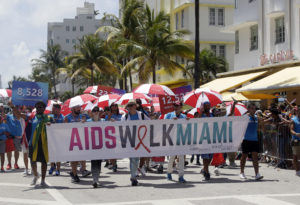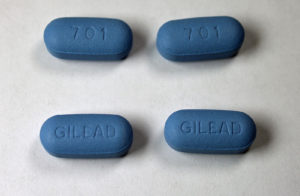Scientists Discover Immune Molecule to Lead AIDS Vaccine Trials
AIDS vaccine developers said they are cautiously optimistic after a conference this week in Bangkok, where scientists reported molecular observations from the first-ever successful trial of an HIV vaccine on humans that could change the way future vaccines attack the retrovirus.
AIDS vaccine developers said they are cautiously optimistic after a conference this week in Bangkok, where scientists reported molecular observations from the first-ever successful trial of an HIV vaccine on humans that could change the way future vaccines attack the retrovirus.
The modestly successful clinical trial showed in 2009 that people who received the vaccine were about 30 percent less likely to contract HIV than those who received a placebo. But what interested AIDS vaccine developers this week was the discovery of certain immune molecules, or antibodies, that seemed to recognize and ward off a certain portion of HIV molecules, decreasing a person’s chances of becoming infected with HIV by 43 percent.
Scientists said that by engineering new vaccines to spark the production of these particular antibodies, future AIDS research will be more focused and more effective. –BF
Your support matters…Nature News:
The vaccine regimen consisted of two components that had each failed on their own: a primer vaccine called ALVAC-HIV vCP1521 from Sanofi Pasteur of Lyon, France, containing several HIV proteins, followed by a booster called AIDSVAX from VaxGen of Brisbane, Australia, made of a protein on HIV’s surface. Moreover, two of the three measures the researchers used to determine whether the vaccine prevented HIV infection did not reveal differences between vaccinees and controls that reached statistical significance.
In the latest study, researchers involved with the trial at Mahidol University in Bangkok and the U.S. Military HIV Research Program in Washington DC assembled a team to scour the blood of trial participants for immune indicators that differed between 41 people who received the vaccine and contracted HIV and 205 participants who did not become infected.
Their work isn’t complete, but so far the team has found two molecular clues to explain why the vaccine prevented HIV for some but not others. Subjects whose blood contained a Y-shaped immune molecule called an immunoglobulin G (IgG) antibody that recognises a portion of a HIV’s outer envelope called the V2 loop were 43 percent less likely to become infected with HIV than subjects whose immune systems did not make these antibodies.
Independent journalism is under threat and overshadowed by heavily funded mainstream media.
You can help level the playing field. Become a member.
Your tax-deductible contribution keeps us digging beneath the headlines to give you thought-provoking, investigative reporting and analysis that unearths what's really happening- without compromise.
Give today to support our courageous, independent journalists.





You need to be a supporter to comment.
There are currently no responses to this article.
Be the first to respond.